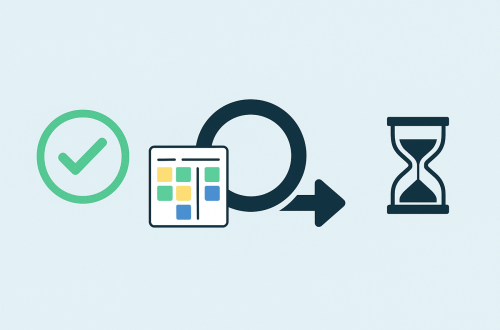
User Story Mapping: A Comprehensive Guide with Real-Life Examples
User story mapping is an increasingly popular tool in product management and agile development. But what exactly is it, and how can it benefit your team and customers? This post delves deep into user story mapping, with examples and a detailed sequence of customer interactions with a product.
What is a User Story Map?
At its core, a user story map visually represents a user’s journey with a product. It arranges user stories (the what and why of any feature) into a sequence or narrative, helping teams understand the bigger picture. The goal? To create a product that caters to real user needs and provides a seamless experience.
Why User Story Mapping?
At its heart, user story mapping is about visualising the user’s journey, translating it into actionable tasks, and ensuring that every stakeholder aligns with the product’s objectives and priorities. With that said, let’s explore the specific advantages of adopting this approach:
- Clearer Vision – By laying out the user journey, teams better understand the product’s purpose and direction.
- Better Prioritisation – Decisions about feature implementation become more informed, ensuring that vital aspects are developed first.
- Enhanced Collaboration – Stakeholders from various departments can weigh in, fostering greater collaboration and more holistic product development.
Who Benefits from User Story Mapping and How?
User story mapping is not just a tool for a specific group within a team or organization. Its benefits span multiple roles, each deriving unique advantages:
Product Managers
Product managers benefit from gaining a holistic view of the entire product life cycle, ensuring that the product’s vision aligns with its execution. By prioritising features and requirements based on the mapped user journey, they can make informed decisions about what needs immediate attention and what can be deferred.
Development Teams (Developers, Designers, QA)
Development teams gain a clear insight into how each feature fits into the overall user experience. This is because user stories present specific tasks with clear goals. Additionally, the organised structure of the user story map highlights the role and significance of every feature within the broader product.
Stakeholders & Business Leaders
Stakeholders can easily discern the product’s strategic direction and its alignment with business goals through the visual representation provided by user story maps. This helps ensure consistency with overarching business strategies and objectives.
UX/UI Designers
Designers can envision the user’s entire journey, which aids in crafting a cohesive and intuitive experience. This clarity comes from dissecting tasks and stories, allowing designers to hone in on specific user interactions and ensure their designs address genuine user needs throughout.
Marketing and Sales Teams
Through user story maps, marketing and sales teams gain a deeper understanding of the product’s features and benefits, enabling them to pinpoint what appeals most to potential customers and tailor their strategies and pitches effectively.
End Users and Customers
End users or customers enjoy a product tailored to their needs, pain points, and journey, offering a more intuitive and satisfying experience. This is because user story mapping focuses on developing features grounded in user requirements, ensuring the final product addresses its audience’s challenges.
How to Create a User Story Map
A typical user story map consists of columns representing different user journey stages. Here’s a basic sequence:

Example: Online Bookstore Journey
Let’s break down an example using an online bookstore.

Final Thoughts
User story mapping is more than just a tool. It’s a mindset that places the user at the centre of product development. By visually laying out the journey, teams can develop empathy, identify potential pain points, and create solutions that genuinely resonate with users.
Harnessing the power of user story maps can be the difference between creating a good product and an exceptional one. Whether new to agile development or a seasoned pro, consider incorporating user story mapping into your strategy for more effective, user-centred outcomes.




